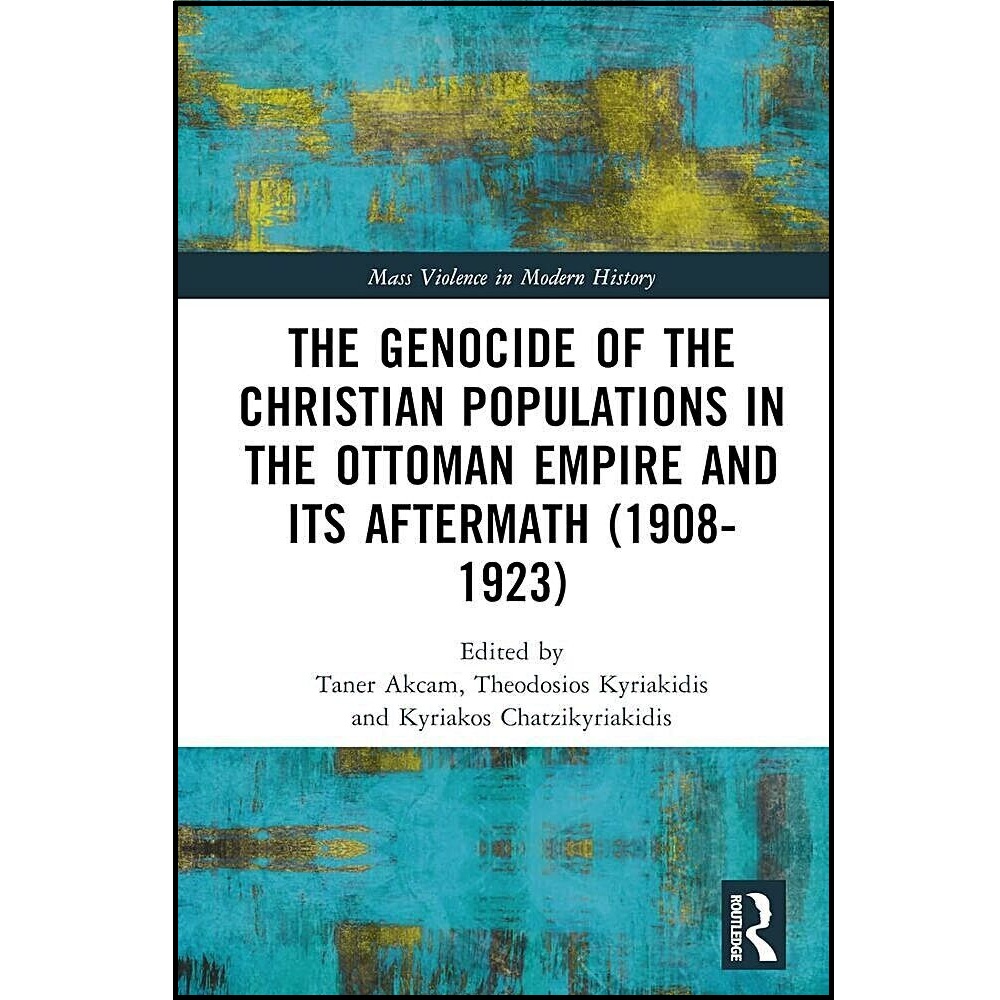The Genocide of the Christian Populations in the Ottoman Empire and its Aftermath (1908-1923)
Edited By Taner Akçam, Theodosios Kyriakidis, Kyriakos Chatzikyriakidis
Routledge 2024.
284 pages.
Available at Amazon
During the twilight years of the Ottoman Empire, the ethnic tensions between the minority populations within the empire led to the administration carrying out a systematic destruction of the Armenian people. This not only brought 2,000 years of Armenian civilisation within Anatolia to an end but was accompanied by the mass murder of Syriac and Greek Orthodox Christians.
Containing a selection of papers presented at The Genocide of the Christian Populations of the Ottoman Empire and Its Aftermath (1908–1923) international conference, hosted by the Chair for Pontic Studies at the Aristotle University of Thessaloniki, this book draws on unpublished archival material and an innovative historiographical approach to analyze events and their legacy in comparative perspective. In order to understand the historical context of the Ottoman Genocide, it is important to study, apart from the Armenian case, the fate of the Greek and Assyrian peoples, providing a more comprehensive understanding of the complexity of the situation.
This volume is primarily a research contribution but should also be valued as a supplementary text that would provide secondary reading for undergraduates and postgraduate students.
Chapters
Introduction
The Anatomy of Ottoman Genocide. Taner Akcam.
Part 1: Documentation, Historical Perspectives/Dimensions
1. The Pontic Greek Genocide documented by Political Archive of the Pontus National Council. Kyriakos Chatzikyriakidis.
2. Testimonies of American Charitable and Missionary Organizations on the Genocide of the Pontic Greeks. Theodosios Kyriakidis.
3. The evidence of the French commission in Pontus on the anti-hellenic persecutions after the end of the First World War (1919-1920). Evripidis Georganopoulos.
4. Liman von Sanders and the German plans for the Christians in Asia Minor during World War I. Stratos N. Dordanas and Vaios Kalogrias.
5. Poles in the Ottoman Empire and Their Opinion on the Extermination of Greeks and Armenians, (1909-1918). Dominika Maria Macios.
Part 2: Memory, Recognition and Denialism
6. Late Recognition of the Assyrian Genocide. David Gaunt.
7. Big Secrets, Small Villages. The Collective Memory of the Assyrian Genocide. Mary Akdemir.
8. Why does Turkish Denialism of Genocide against Christians Persist?: An Examination of the Political and Cultural Factors. Mark A. Wolfgram.
Part 3: Legal Aspects and Human Rights
9. The "systematic extermination" of the Christian element as presented before the Commission on the Responsibility of the Authors of the War and on Enforcement of Penalties (1919-1920). Marilena N. Papadaki.
10. The Greek Minority’s Fate in the Former Ottoman Empire as a Human-Rights Crisis. H. Travis.
11. Shared Intent in a Collapsing Empire: Pan-Turkism as Mens Rea Evidence of Genocide against Christian Populations in the Late Ottoman Period. Michael J. Kelly.
12. Protection of Women and Children in the Near East: the Efforts of the League of Nations. Edita Gzoyan.




